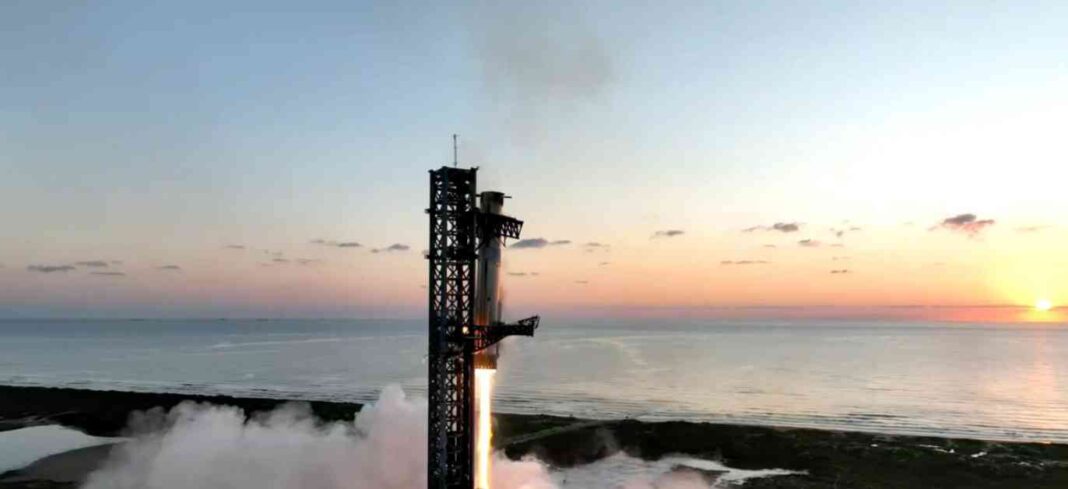SpaceX achieved a major milestone as they successfully caught the Starship booster during its return to the launch site using a pair of oversized “chopsticks.” This test flight, the fifth in the Starship development program, took place at the Starbase site in southeast Texas. The Starship, standing at nearly 400 feet tall, is a crucial part of SpaceX’s goal to enable life on other planets and NASA’s Artemis campaign to return humans to the moon.
The primary objectives of this test flight were to demonstrate the ability to recover both the Starship upper stage and the Super Heavy booster for rapid reuse. The successful controlled reentry and splashdown of the Starship upper stage had already been achieved in a previous test mission. However, the booster catch was a unique challenge in the history of rocketry.
During the flight, the Super Heavy booster slowed down, hovered, and was gently captured by the “chopstick” arms attached to the launch tower. This innovative method of catching the booster marks a significant advancement in reusable rocket technology. Following the booster detachment and catch, the Starship continued its ascent into orbit before splashing down in the Indian Ocean.
SpaceX had to meet thousands of criteria to ensure the safe and successful completion of the catch attempt. Despite initial delays in receiving the launch license from the Federal Aviation Administration, SpaceX engineers worked tirelessly to prepare for the test flight. The FAA ultimately approved the launch, citing SpaceX’s compliance with safety, environmental, and licensing requirements.
In preparation for future test launches, SpaceX engineers have conducted various tests on the launch tower, upgraded the rocket’s thermal protection system, and tested the launch pad’s water deluge system. The company aims to bring back the Starship upper stage to the landing site in future flights, further advancing the goal of fully and rapidly reusable space travel.
With each successful flight, SpaceX continues to improve its hardware and operations, paving the way for a revolution in human access to space. By pushing the boundaries of technology and safety in every flight, SpaceX is on the brink of transforming humanity’s ability to explore and inhabit other planets.











